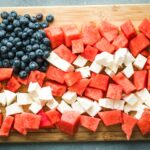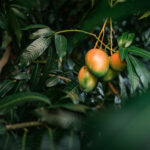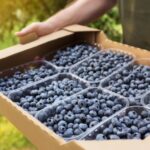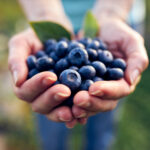Agronometrics in Charts: California gears up for its 2024 cherry season

In this installment of the ‘Agronometrics In Charts’ series, we take a look at California's cherry season. Each week, the series looks at a different horticultural commodity, focusing on a specific origin or topic and visualizing the market factors that are driving change.
The 2023 cherry season in California will be remembered as a challenging campaign for the industry. Typically, the season sees the first fruits ripening by the end of April, with shipments wrapping up by mid-June.
However, last year defied these norms due to an extended winter that stretched into spring, resulting in a slow start to the harvest. This delay led to a near-record harvest that overlapped with the Pacific Northwest season, saturating supply channels and depressing market returns. Shipments of California cherries continued until July 3, exacerbating market saturation and forcing many growers to abandon orchards with less than-perfect quality as the costs of harvesting were unlikely to be covered.
Prices dropped as low as $3.39 per kg in week 25. Mark Calder of Primavera Marketing reflected on the challenges faced, stating, “We couldn't do much, in relation to seasonal overlap. We had a record harvest on our hands. The fruit was already packed and needed a home. Fortunately, the 2024 California cherry supply is shaping up to be very different. Despite another wet winter, fruit maturity is more in line with historical norms and with a shorter harvest.” Calder expressed optimism, noting, “This year, we are seeing a return to a more typical seasonal calendar. Early varieties are expected to debut around April 25, with steady volume projected for the southern San Joaquin Valley by May 5,” says Calder.
“Things appear to be on track this year,” says Dave Martin of Stemilt Growers. “The Coral variety is expected to peak between May 10 and 25, followed by Bing between May 25 and June 10. Overall, industry consensus suggests a good crop with moderate volume.”
Among the 10.1 million boxes shipped in 2023, Coral was the leading variety with 4.56 million boxes packed, followed by Bing with 2.3 million boxes. Known for its resistance to cracking after rain and consistent fruit set, Coral has become a cornerstone of the industry over the past decade. In contrast, the Bing variety remains concentrated in the northern farming districts around Stockton and Lodi. As California prepares for the 2024 cherry season, stakeholders remain optimistic. The resilience of growers and industry players offer hope for a fruitful harvest for California’s cherry sector.

Source: USDA Market News via Agronometrics.
(Agronometrics users can view this chart with live updates here)
 Source: USDA Market News via Agronometrics.
Source: USDA Market News via Agronometrics.
(Agronometrics users can view this chart with live updates here)
Related Articles: British cherry growers optimistic as trees blossom early
 Source: USDA Market News via Agronometrics.
Source: USDA Market News via Agronometrics.
(Agronometrics users can view this chart with live updates here)
In our ‘In Charts’ series, we work to tell some of the stories that are moving the industry. Feel free to take a look at the other articles by clicking here.
All pricing for domestic US produce represents the spot market at Shipping Point (i.e. packing house/climate controlled warehouse, etc.). For imported fruit, the pricing data represents the spot market at Port of Entry.
You can keep track of the markets daily through Agronometrics, a data visualization tool built to help the industry make sense of the huge amounts of data that professionals need to access to make informed decisions. If you found the information and the charts from this article useful, feel free to visit us at www.agronometrics.com where you can easily access these same graphs, or explore the other 21 commodities we currently track.














































